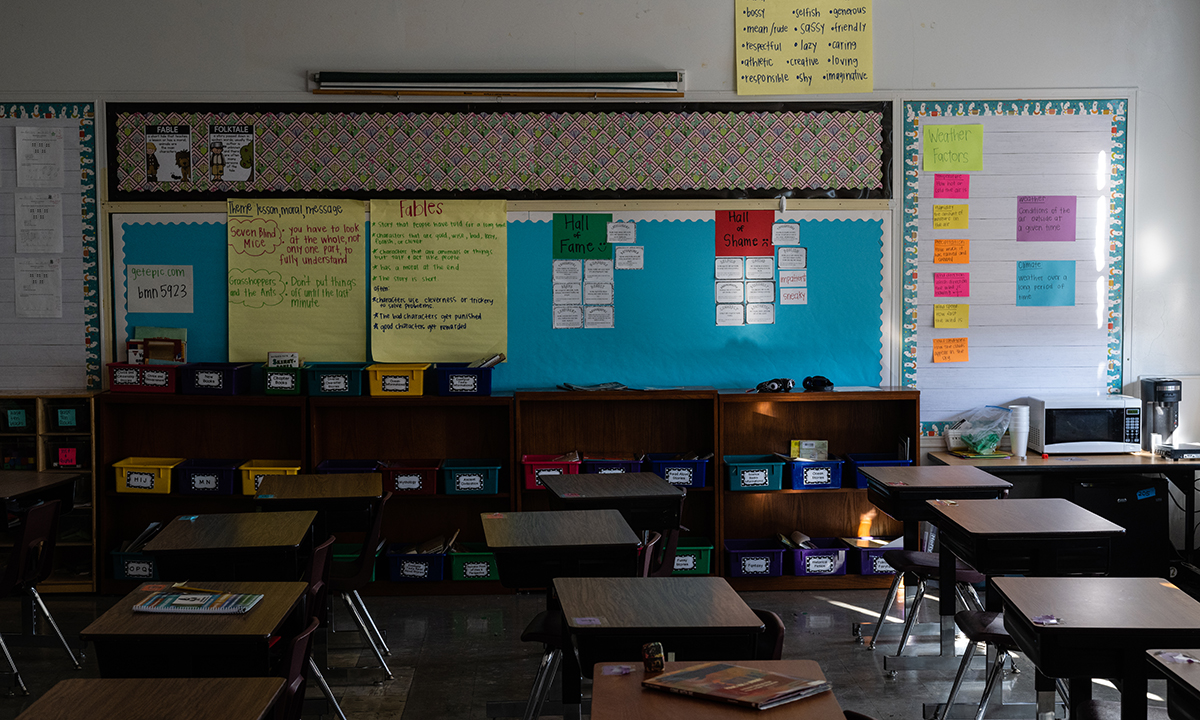More Schools Have Closed in Kentucky This Year Than Rest of U.S. Combined. Why?
Why the Bluegrass state stands out as such an outlier remains something of a mystery to officials

Get stories like this delivered straight to your inbox. Sign up for The 74 Newsletter
This school year, one state has shuttered classrooms due to illness three times as often as the rest of the country combined, new data show.
In Kentucky, infection has prompted at least 385 schools across 44 districts to cancel in-person classes for a day or more, accounting for three-quarters of all such disruptions across the country this academic year, according to a recent audit from the school data service Burbio. Tennessee was the state with the second-most closures, with just 46 schools across six districts affected.
Why the Bluegrass state stands out as such an outlier remains something of a mystery to officials.
“I really cannot imagine why Kentucky is experiencing more closures than other states,” said Ballard County schools Superintendent Casey Allen, whose district shut down for two days in early November when influenza rates were high.
Unlike during the peak of the pandemic, disruptions this year have tended to last only a few days and have mostly been spurred by the flu, not COVID. Flu spread in Kentucky has been some of the highest in the nation, according to the Centers for Disease Control and Prevention. Another 10 states are also at the highest level of risk.
In Ballard County in early November, student and staff attendance fell to around 70%, Allen explained in an email. With such large swathes out sick, he felt his hands were tied.
“Like many of my colleagues, I consider closing schools due to illness to be a last-ditch effort to stop the spread of an illness,” he said. “Our district values in-person classes and works hard to have our students in school with a teacher in front of them.”

With so many instructors unable to work, the district did not pivot to virtual learning and will have to make up the days at the end of the year. Powell County schools shut down for a full week and will also have to make up the days, said Superintendent Sarah Wasson. Several other districts used virtual instruction while classrooms were shuttered.
“For some reason, flu season seems to be earlier this year than in previous years. This particular flu [strain] appears to have a longer impact period than previous years,” said Jamie Weddington, superintendent of Lewis County Schools, which also briefly closed.
Districts can receive approval for up to 10 days of remote learning per year from the state education commissioner, explained Toni Tatman, a Kentucky Department of Education spokesperson.
She questioned the accuracy of the Burbio figures and declined to comment on why her state’s rate of school closures this year has been higher than other states with similar levels of flu infections.
“We have no reason to believe Kentucky’s numbers would be any different than other states,” Tatman said.
Burbio collects its data through weekly audits of news stories and communications from a list of 5,000 school districts that account for 70% of the nation’s students, the company’s co-founder Dennis Roche explained. Though Burbio’s data does not capture every closure, he said his team’s 10 researchers could not have systematically over-represented disruptions in Kentucky compared to those in other states.
“We’ve now been doing this … for over two years,” he said. “We really go pretty deep on this stuff.”
The Kentucky School Boards Association has also tracked illness-related school closures in the state, documenting 66 districts affected, an even higher tally than Burbio’s. Spokesperson Josh Shoulta said he couldn’t “speculate” on why Kentucky’s numbers have been higher than other regions because the organization hasn’t tracked closures outside its own state.
The Kentucky closure numbers arrive during what observers have called the first “normal” school year since COVID initially hit in March 2020, with days- or weeks-long school shutdowns now largely a thing of the past. Still, in another reminder of the pandemic’s long shadow, officials leading Sacramento, California’s school system said they could soon reinstate a requirement that students and staff wear face coverings should COVID rates continue to increase in the city.
On Dec. 8, New York state health officials recommended that kids should wear masks in schools, explaining in a letter that, “A host of respiratory viruses, including influenza, RSV and COVID-19, have taken hold in our state and in most of our communities. These viruses, while often manageable, can cause serious outcomes, especially for children.”
Get stories like these delivered straight to your inbox. Sign up for The 74 Newsletter

;)
